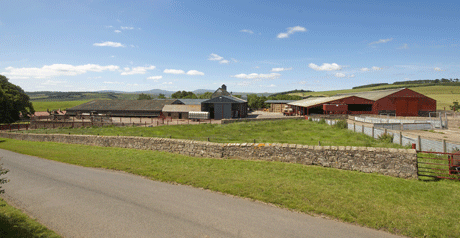Weaker pound brings more interest in UK farmland

A weaker pound in recent weeks has sent agents’ phones ringing again with enquiries from abroad.
Sterling weakened sharply against the euro in October prompting a revisit to the UK market from foreign investors, particularly Danes.
The pound also tumbled almost 3% against the US dollar, falling to its lowest level in five years as fears of a recession grew. The pound dropped as low as $1.62, its lowest since September 2003.
Charlie Evans of Strutt & Parker’s London office said that as soon as the pound began to slip significantly, he had taken calls from several people and two Danish farmers who had been watching the currency closely. “For those with euros, English farmland looks good value again compared with earlier in the year.”
There had also been significant interest from American funds seeking commercial farmland throughout the world, but who had not previously considered the UK due to the relative strength of sterling. “For those denominated in dollars the shift in currency values meant as much as a 20% difference.”
But Irish buyers had not been so quick to express interest in UK farmland on the back of the currency shift.

The recent falls in sterling against the euro and the US dollar mean UK farmland is once again attractive to overseas investors.
Other agents said they, too, had been hearing from overseas investors, notably from Denmark. Savills’ Jessica Simpson said: “The Danes are re-emerging, but could be affected by borrowing problems. Loan-to-value ratios are quite high in Denmark and the credit crunch could be a factor. We’ve not seen so much interest from Irish buyers. But a lot of investors buying farmland are already highly exposed to other property markets.”
Other parts of the eurozone were expressing interest in UK farmland, including some from Italy, she added.
Andrew Fallows of Carter Jonas in York said he had also taken a couple of calls. “There are non-farming individuals with cash deposits looking at land purchases. Commercial farmers have made a return to the market this year but they may now be replaced by others who ssee land as a safe haven for money at the moment.”
Humbert’s Andrew Pearce reckoned expressions of interest on the back of the currency shift had yet to manifest themselves into any done deals. “People are generally sitting back at the moment to gauge where things are going while uncertainty continues to surround banks and other parts of the economy. But there are other people thinking that if there’s a good deal to be done, it’s not a bad haven to put money.
“Hopefully, the spring will bring more clarity and if supply becomes limited again – and it probably will – it’s possible the spring could see more activity. However, the high values we saw earlier in the year have gone for now. I can see average prices for good grade 2-3 arable land at £5000-£5500/acre, and unlikely to drop back dramatically from that.”
